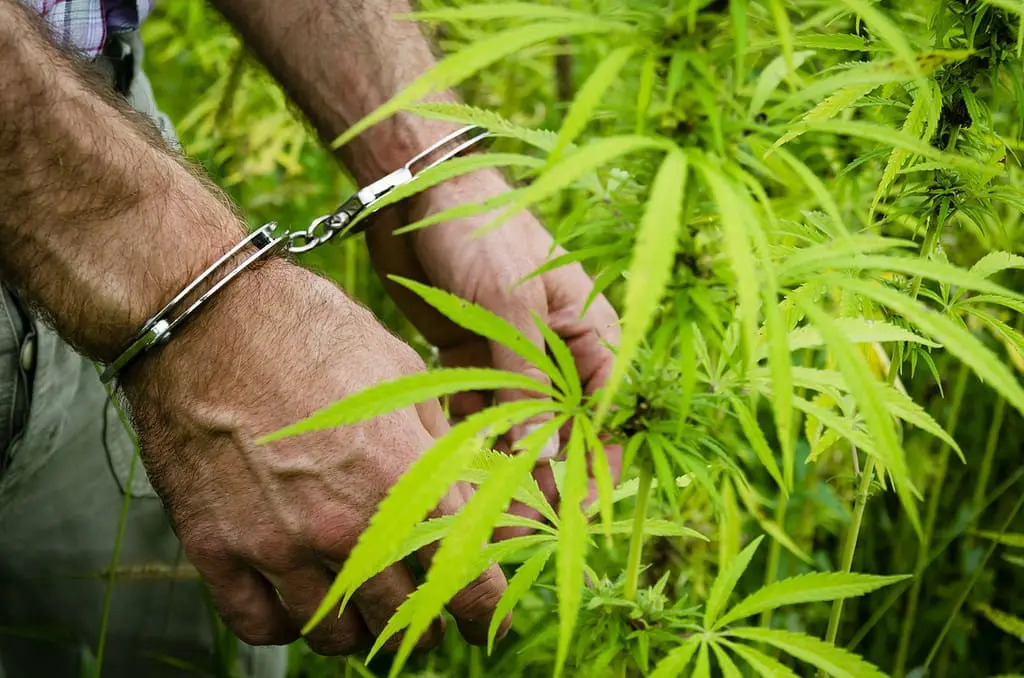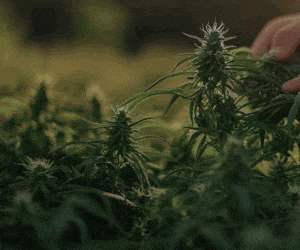Politics
DEA Releases New Data On Marijuana Enforcement, Tracking ‘Chinese Grows’ For The First Time

Enforcement efforts against illicit cannabis operations by the U.S. Drug Enforcement Administration (DEA) held mostly steady in 2024 compared to previous years, according to newly released agency data that, for the first time, also tallies actions against what DEA calls “Chinese Grows.”
The new report from DEA’s Domestic Cannabis Eradication / Suppression Program includes numbers of “eradicated” grow sites, arrests and weapons seized in association with marijuana-related enforcement actions, as well as the DEA-estimated market value of seized cannabis products.
Though data from some states is not included in the latest report, the DEA program nationwide counted 16,330 cultivation sites eradicated in 2024, including 14,904 outdoor sites and 1,426 indoor ones. A reported 5.3 million plants were seized.
As a result of the actions, 5,764 arrests were made, and 3,125 weapons were seized, the report says.
In general, the 2024 numbers are considerably lower than a decade ago, before many states had legalized and regulated marijuana for adults or medical patients, providing consumers with legal and regulated means to access cannabis and reducing illicit market demand. But they’re otherwise largely in keeping with actions from recent years.
On that note, however, DEA has come under fire in the past for its failure to promptly or completely release data from its eradication program. Last December, critics pointed out that the agency hadn’t released new data in more than a year and a half, since May 2023.
Although DEA recently posted the new 2024 data, it also appears to have removed a statistical report from 2022 that had already been published. And a 2023 report includes entries of “0” for enforcement in a number of states, indicating either missing data or a lack of enforcement actions whatsoever.
DEA didn’t immediately respond to Marijuana Moment’s requests for comment.
Paul Armentano, deputy director of the advocacy group NORML, called it “troubling” that the agency hasn’t provided more robust data.
“The DEA’s failure to release this data in a timely manner, coupled with its failure to release complete data for the years 2022 and 2023, once again highlights the federal government’s lack of transparency when it comes to providing accurate statistics on the estimated costs and scope of federal marijuana prohibition in America,” he said. “At a time when voters and their elected officials nationwide are re-evaluating state and federal marijuana policies, it is troubling that these agencies are providing far less than a complete picture regarding the true costs and impact of maintaining cannabis criminalization in America.”
The recently released report, about enforcement actions from last year, for the first time includes a separate column labeled “Chinese Grows”—illegal cannabis operations that officials and media reports say have become increasingly common in the U.S. in recent years.
In all of 2024, 15 Chinese cultivation operations were the targets of enforcement actions, the DEA data show, most of them in Washington State (five) and Oregon (four).
That’s just a sliver of the overall illicit cannabis actions nationwide, Armentano at NORML pointed out.
“Out of the tens of thousands of grow operations seized in 2024, federal agencies only identified Chinese involvement in 15 of them,” he said in an email to Marijuana Moment. “This total would appear to undermine claims that Chinese drug traffickers are rampantly involved in these domestic operations.”
Armentano added that “it also begs the question why Chinese operators are being singled out as opposed to the involvement of other international [drug trafficking organizations].”
For decades, for example, Mexican cartels were involved in illegal cannabis cultivation in parts of California, but DEA didn’t separate out those groups in past reports.
Notably, the most recent DEA statistical report does not include any information whatsoever on some states, such as Maine, which news reports last year described as “the newest frontier for the illicit marijuana trade,” especially for Chinese-involved operations. It’s possible the missing data would show significantly more enforcement actions nationally.
The Department of Justice (DOJ) in past weeks charged seven Chinese nationals with illegal marijuana activity in Maine and Massachusetts, for instance, though those actions are too recent to be reflected in the new DEA report.
Separate data from last May, released by U.S. Customs and Border Protection (CBP), indicated that seizures of cannabis at southern border declined again in 2023.
Those figures showed that federal agents intercepted roughly 61,000 pounds of cannabis in the region—a 29 percent drop from the year before.
Those findings track with other indications of declines in illegal marijuana trafficking as a growing number of state laws gave American consumers legal places to buy cannabis, including a report from the U.S. Sentencing Commission in March of last year showing federal cases continuing to fall.
While that report didn’t cite the specific number of marijuana trafficking cases in 2023, it dipped again compared to the previous 2022 low of 806. By comparison, there were roughly 5,000 cannabis cases in 2013.
A 2022 report from the Government Accountability Office (GAO) shed some light on who’s getting caught up in enforcement activities. At checkpoints across the country, agents are mostly taking small amounts of marijuana from American citizens rather than making large busts of international cartels, as some might assume.
Also, consistent with other studies and federal reports, the GAO analysis showed a significant decline in cannabis seizures at checkpoints overall since 2016.
While DEA hasn’t updated its DCE/SP data, the agency has been involved in another area of marijuana policy: It’s actively participating in an administrative hearing on the Biden administration’s proposal to reschedule cannabis. However, the DEA judge assigned to that case has been critical of the agency throughout the processdue to largely procedural missteps.
Separately, just days after the Senate confirmed a new DEA administrator appointed by President Trump, the agency promoted yet another message warning against marijuana use, linking it to depression and suicidal thinking.
While DEA has been promoting a variety of anti-cannabis campaigns and editorials, this latest feature comes at a notable time, following the Senate confirmation and swearing in of Terrance Cole to serve as the agency’s administrator. Advocates and stakeholders are monitoring closely to see how DEA navigates both the policy and messaging around cannabis with Cole’s confirmation.
Cole indicated during his confirmation process that he planned to prioritize marijuana rescheduling, without giving his specific opinion about the reform. But that was not reflected in a statement issued following his taking office, with cannabis policy going unmentioned as part of a list of immediate policy priorities.
So far during the Trump administration it seems the agency isn’t giving up on its ancillary anti-marijuana promotions. For example, last week DEA marked “World Emoji Day” by again promoting its guide to “decode” symbols that it claims are associated with illegal drug use and sales.
Also, during “National Prevention Week” in May, DEA highlighted a campaign that encourages people to share memes with dubious claims about the effects of cannabis—including the theory that it is a “gateway drug” to using other substances.
The “Just Say Know” campaign wasn’t directly organized by DEA; rather, it was coordinated by the organization Johnny’s Ambassadors, which was founded parents who say their child died by suicide after consuming high-potency marijuana concentrates. But the federal agency hosted the memes on two of its taxpayer-funded websites and sent email blasts to promote them.
In 2023, DEA also advised young people that, rather than doing drugs, they should focus on becoming Instagram influencers. The agency promoted tips on how to get a “natural high” as an alternative to drugs, sharing what it said were “7 Better Highs” such as becoming famous on Instagram, playing video games and going to a pet store to look at animals.



